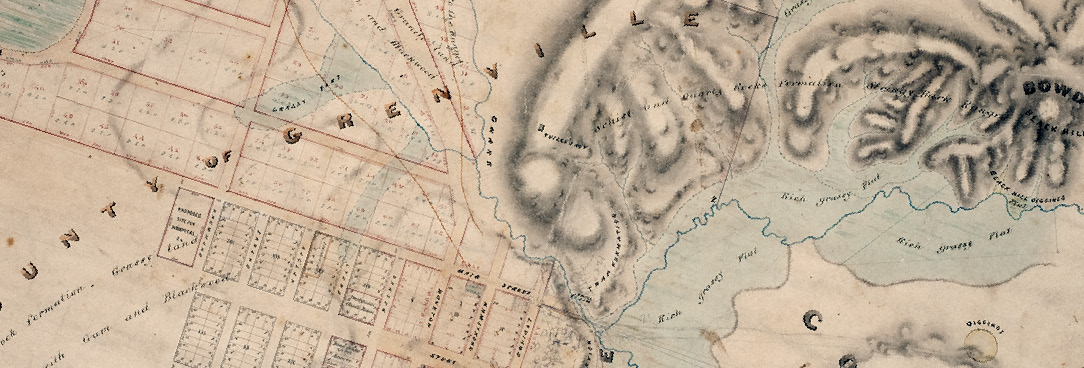Last updated:
Refereed articles
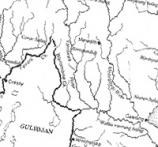
Born out of the allegiance of the Queen, belonging to a sovereign and independent tribe of Ballan
Expand SummaryThis paper is concerned with the issue of the jurisdiction of the British colonial criminal law over Indigenous Australians, particularly in the area of serious offences such as murder and rape. In particular, the paper examines the attempted use in the 1860 case of Regina v Peter of the legal demurrer that the Aboriginal accused, known as Mungett or Mungit, a Marpeang buluk clansman of the Wathawurrung language group known by the name of Peter, was not subject to the jurisdiction of the court because he was not born a British subject and had never entered into allegiance to the British Queen. This paper complements previous studies on the issue of the amenability to British law by considering matters such as Mungett’s apparent knowledge of legal procedures and attempts to provide greater understanding of the cultural milieu within which he lived. The paper also examines the question of whether or not Wathawurrung traditional systems had survived sufficiently by 1860 to warrant Peter’s claim that he should be tried by his own people rather than the colonial courts.

Chinese protests against the Victorian Government's anti-Chinese legislation 1855-1862
Expand SummaryIn the latter half of the 1850s, Chinese in Victoria protested against unjust taxation. Although the taxes imposed on the Chinese were much harsher than the goldfields licence that the diggers fought against during the first half of the 1850s, the Chinese protest campaign has not received the same attention or interest,either in history books or popular imagination.
This article aims to cultivate an appreciation of the Chinese protests by placing their petitions in the context of Victoria’s evolving anti-Chinese legislation. Besides providing an understanding of the arguments that the Chinese used to defend themselves, this perspective highlights the perseverance of the Chinese and draws attention to their successes in rendering anti-Chinese legislation ineffective. The accompanying article in this issue of Provenance is designed to assist researchers in locating the whereabouts of the Chinese petitions.
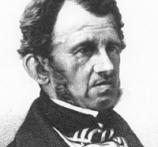
In July 1846 the Superintendent of Port Phillip, Charles Joseph La Trobe, sent the Colonial Secretary in Sydney an extensive report about a matter of great importance to him – the effective prosecution of criminal cases involving Aboriginal people. By the mid-1840s the continual problems that beset prosecutions of this nature frustrated La Trobe to the extent that he decided to restate the issues clearly in a long letter, outlining the considerable confusion that existed about the legal status of Aboriginal people, evidentiary law and the role of magistrates in criminal cases. La Trobe expected that his presentation of ‘plain facts and past experience’ of the matter would enable the New South Wales Governor to ‘bring the subject more distinctly under the attention of the Home Government’. This was not the first time La Trobe had brought the problematic character of judicial proceedings to the attention of colonial authorities. As superintendent, he attempted to highlight what he thought were defects in the criminal justice system. Ultimately his efforts did little to change legal practice but are a valuable insight into his approach to Aboriginal issues and the difficulties he faced while attempting to fulfil one of his most important duties – the improvement of conditions for Aboriginal people and the resolution of conflict in a rapidly expanding white society.
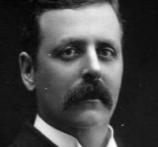
The career of the founder of the Baillieu family’s fortunes, William Lawrence Baillieu, is shrouded in misconception and even mystery. After a meteoric rise and fall in the land boom and bust of the 1880s and 1890s, he restored his fortunes and through the Collins House Group was involved in the establishment of almost every important mining and industrial enterprise in Australia between 1895 and 1930. A wide variety of records at PROV shed light on many previously unknown or misinterpreted aspects of his life and work.
Forum articles
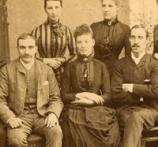
Robert Herdman of Paisley, Scotland and Australia
Expand SummaryFamily historians often come up against brick walls in the shape of lost family members. In 2007, British family researcher, Anne Martin, challenged herself to find her great-uncle, Robert Herdman. Born in Scotland in 1861, Robert had gone to sea and no word of his destiny had reached the family. Fortunately, this lost sheep was also a black sheep and left traces of his activities in government records now held by Public Record Office Victoria (PROV). By using, firstly, a general family search list, Anne made contact with local researcher, Marilyn Kenny, who was able to elicit from PROV records that Robert had a criminal record. From that beginning, and using a variety of online sources, Anne and Marilyn were able to track Robert’s life journey from the time he left Scotland in 1891 as a shilling-a-month man working his passage to Australia. Robert, a baker by trade, travelled around south eastern Australia working as a shearers’ cook. On at least two occasions, he was before the court and served a sentence at HM Gaol Pentridge. Marilyn Kenny sourced Robert’s prison photograph from PROV records and provided family members with their first sight of the lost sheep in over 100 years. Robert became a patient of Dr John Elder Butchart at the Austin Hospital and died there in 1914. The research demonstrates how much, and how varied, is the social and individual information available in public records.
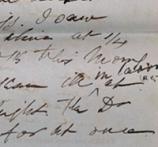
Midwives, medical men, and coronial investigations into maternal deaths in nineteenth-century Victoria
Expand SummaryBirth in nineteenth-century Australia was an event shrouded in mystery. The care of women at confinement was discussed in private domains such as the Medical Society of Victoria, a professional medical organisation, and comprised the work of women’s hospitals such as Melbourne’s Lying-in Hospital and Infirmary for Diseases Peculiar to Women and Children, now known as The Royal Women’s Hospital. Generally speaking, birth was not a subject for public discussion. Nineteenth-century women diarists, who occasionally make reference to birth and miscarriage, do so in the most euphemistic of terms. Coronial records pertaining to maternal deaths in this era therefore offer a unique window ontowhat was otherwise an intensely private matter.
Coronial investigations into the circumstances surrounding suspicious deaths began in what became the colony of Victoria as early as the 1830s. By the 1850s, coronial investigations had extended to maternal deaths, that is, those in which a woman died as a result of childbirth. Inquest files concerning maternal deaths vary in their contents and many are not weighty documents. Some files, particularly those of the 1850s, contain only two pages of evidence and a judgement, with little analysis of the circumstances of the death. In other cases, inquests reported upon in newspapers have no file held by Public Record Office Victoria. Others contain witness statements from a range of people: childbirth attendants such as midwives, nurses, and neighbours; husbands and family members; and medical attendants, some of whom may have attended the deceased or performed an autopsy under coronial direction. Occasionally the files contain correspondence, such as that between the police and the coroner, which helps to explain the broader circumstances of deaths.
Nineteenth-century coronial inquiries into maternal deaths consist largely of text. There are rarely diagrams or other figures. The grim accounts of what happened to women are conveyed entirely in the disarming words of deponents, often in response to specific questioning by the coroner or his jury. Given that most women in the nineteenth century gave birth at home, depositions highlight the complexities of providing care in an era when everyday household conveniences now taken for granted, such as telephones, running water and electric light, were not available. Using a combination of evidence provided to coronial inquests, it is possible to build a picture of the nature of care provision, including who provided it and what ‘care’ meant in individual circumstances. Coronial investigations into maternal deaths illuminate the challenges of administering justice in what was a contested professional arena in the nineteenth century.
This paper uses the 1869 inquiry into the death of Mrs Margaret Bardon, summarised in two parts as a case study, and draws on other inquests to discuss the relationship between midwives, doctors, and coronial investigations of maternal deaths, and to consider elements common to inquiries conducted in this era.

The Royal Oak Hotel in Ballarat is today a clean and convivial spot to spend time with friends and colleagues. It was not always this way, however. In the nineteenth century it was not uncommon to see men and women ‘in a helpless state of drunkeness’ outside hotels, and these establishments wereavoided by ‘respectable’ people.
Some of the changes to the hotel culture were driven by the temperance movement. Though many of Ballarat’s hotels resisted the push for change, public drunkenness had become a significant problem and various groups campaigned in the interests of wives and children. The hotel trade received a boost in 1926 with the launching of the Ballarat Bertie beer label, featuring Bertie the cellarman. The advertising campaign to popularise Bertie was inspired, and the advertisements were large and varied. The reformers fought back by insisting that meals must be served with drinks, and so the winner in this battle turned out to be the patron.
Since 1994 the Royal Oak’s patronage has increased, with the dining record standing at 102 meals served in one night. The hotel has become very much a home away from home for many, and is now a valued social asset.
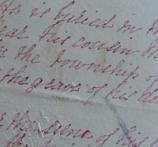
Interpreting a family heirloom
Expand Summary‘Margaret Knopp is my name, Victoria is my nation, Woods Point is my dwelling place and Heaven is my expectation’. This verse is one of many handwritten into a scrapbook that my great-grandmother, Margaret Hester (née Knopp) began compiling in 1884 in Woods Point, a goldmining township in the ranges east of Melbourne. Margaret was born on 25 July 1870 in Woods Point, and was the daughter of German miner Johann (John) Knopp and his Irish wife Catherine Foley.
Several years ago I was given custody of this scrapbook together with some photographs and newspaper clippings, that had been in my father’s family for several generations. On first glance the scrapbook had some visual appeal – beautiful cards featuring flowers, Christmas scenes and handwritten verse – but little biographical or family information, or so I thought.
When I looked at the scrapbook recently in order to take digital photographs of the pages, I found several items that puzzled me. On a page surrounded by scraps of flowers and birds Margaret had written ‘F B Deeming executed 23rd May 1892’, not once but twice. Alongside the record of Deeming’s execution was an unsourced newspaper clipping that referred to poetry about the Deeming case. I would have paid little attention to these items had I not been familiar with Public Record Office Victoria’s online exhibition on Frederick Bailey Deeming – the murderer, bigamist, thief and conman who had been executed in Melbourne on 23 May 1892. Margaret’s record of the event was an odd inclusion amongst the romantic poetry and religious verse. The other items that caught my attention were two verses, handwritten by Margaret but with the name ‘Thos Herlihy’ given as the author. The first verse laments the passing of Thomas’s friend John Foley with whom he immigrated in 1857; the second records the deaths of several of Thomas’s female relatives. On another page Margaret had included the death notices of two of Thomas’s daughters. I was not familiar with the Herlihy name in Margaret’s family history, but clearly the family meant something to Margaret. It seemed there was more to this scrapbook than the romantic fantasies of a 14-year-old girl.
The discovery of Margaret’s scrapbook and its intriguing contents led me to revisit what I knew of Margaret’s family history and her ‘dwelling place’ of Woods Point. What transpired is an investigation typical of many family historians. Using the private records our ancestors have left behind and the public record of their lives in archives such as PROV we can build up a better picture of the life and times of individuals and families who made Victoria their home.
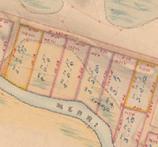
I first became aware of surveyor William Swan Urquhart when researching a history of the Elphinstone district, Central Victoria, with a friend, Noel Davis, for it was Urquhart who surveyed the township and parish of Elphinstone. I started to investigate his background only to discover that information about him was almost non-existent. My interest in him was heightened when I discovered that he had laid out many other settlements, including Ballarat and Castlemaine, and that Urquhart Bluff on the Great Ocean Roadwas named after him.
By now I was determined to find more about the man and struck gold at Public Record Office Victoria where I discovered his Taradale Survey Office Outward Correspondence Register 1854-1856 in VPRS 1330/P0, Unit 1. It was there that I also found outward correspondence from survey headquarters in Melbourne to Urquhart in VPRS 6/P0. Fortunately the correspondence has been indexed so I was able to find a list of all entries relating to Urquhart. I also discovered some of his correspondence to the Head Office in Melbourne for the period 1847 to 1852 in VPRS 97/P0 and for the late 1850s to 1862 in VPRS 44/P0. In addition, I was able to identify 231 of his map plans in VPRS 8168 Historic Plan Collection (a copy of which can be accessed on microfiche in PROV reading rooms as VPRS 15899.

Locating Chinese petitions against anti-Chinese legislation during the mid to late 1850s
Expand SummaryThis paper complements my article on petitions against taxes that were imposed on the Chinese during the latter half of the 1850s in Victoria. It seeks to encourage further research on this topic and hopefully the discovery of more petitions. Towards these ends, this article provides a guide to where those petitions that have been discovered can be located in Public Record Office Victoria, Votes and Proceedings of the Legislative Assembly (Victoria), newspapers and books. No single source contains a comprehensive collection of the petitions from all phases of the Chinese protest campaign and each type of source has particular limitations and benefits.
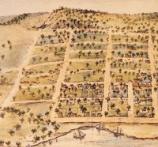
Port Phillip District's first headmistress
Expand SummaryWell-connected governess Nichola Anne Cooke established the first ladies’ seminary in Melbourne in 1838, just three years after the foundation of the settlement. Conditions were still very harsh and Nichola experienced devastating personal tragedy. She needed courage and enterprise for her school to be successful, and she demonstrated many times that she had both. With the deaths of her family and benefactor within nine months of her arrival in Melbourne, she used her education to provide a source of income, establishing Roxburgh Ladies Seminary on the Batman property,now the site of Young and Jackson’s Hotel in Melbourne.
Nichola upheld her right to stay on the property when the Batman executors tried to force her to leave, and provided stability in the lives of the Batman daughters. She actively engaged the civil courts in protecting her assets at a time when women were not even able to vote, and was one of the first women to own land in the Port Phillip District prior to its separation from the colony of New South Wales.
Nichola Cooke overcame many difficulties to earn her living as a single woman in the fledgling settlement. Her story is remarkable for her links with the development of Melbourne and is important to the history of education in the Port Phillip District.
